15 Ng. 100 Đ. Nguyễn Xiển, Thanh Xuân Nam, Thanh Xuân, Hà Nội 100000
Introduction: Where Ancient Traditions Meet Breathtaking Landscapes
Sagada. The very name evokes images of mist-shrouded mountains, ancient burial rituals, breathtaking caves, and a rich tapestry of indigenous culture. Tucked away in the serene Cordillera Mountains of Northern Luzon, Sagada is a charming and enigmatic municipality in Mountain Province, Philippines, that offers a unique escape from the ordinary. Unlike the bustling beach destinations, Sagada beckons to adventurers, cultural enthusiasts, and those seeking a profound connection with nature and heritage. From its iconic hanging coffins clinging to limestone cliffs to the subterranean wonders of Sumaguing Cave, and from the tranquility of Bomod-ok Falls to the vibrant local markets, Sagada promises an experience unlike any other.
It's a place where time seems to slow down, allowing you to immerse yourself in the living traditions of the Igorot people and marvel at landscapes sculpted by both nature and centuries of human ingenuity. This comprehensive guide will take you on an in-depth exploration of Sagada's mystical allure, revealing its captivating attractions, its unique culture, and why it deserves a top spot on your Philippine travel itinerary. And for a seamless, expertly guided, and truly unforgettable expedition to this cultural and natural wonderland, Golden Trail Travel is your perfect partner, ready to help you plan and book your personalized Sagada adventure. Visit them at https://goldentrailtravel.com/ to start your highland journey today!
I. Unveiling Sagada: A Gem in the Cordillera Mountains
Sagada is nestled deep within the Cordillera Central mountain range of Luzon, roughly 275 kilometers north of Manila. Its high-altitude location (around 1,500 meters or 5,000 feet above sea level) gives it a distinct cool climate, a refreshing change from the tropical heat of the lowlands.
A. Geographic Charm and Natural Formations:
Limestone Karst Landscape: Sagada's topography is dominated by dramatic limestone formations, cliffs, and valleys. This geological feature is responsible for the area's numerous caves, sinkholes, and the sheer cliffs that are home to the famous hanging coffins.
Mountainous Terrain: Surrounded by towering peaks and lush pine forests, Sagada offers spectacular panoramic views, especially during sunrise or sunset from viewpoints like Kiltepan Peak.
Underground Rivers and Waterfalls: The limestone karst system has also created intricate cave systems with underground rivers and springs that feed into beautiful waterfalls, such as Bomod-ok Falls (Big Falls) and Bokong Falls (Small Falls).
Terraced Landscapes: While not as expansive as the rice terraces of Banaue, Sagada also features smaller, charming rice terraces that blend harmoniously with the mountainous backdrop.
B. Indigenous Culture: The Igorot Heritage:
Sagada is primarily inhabited by the Kankana-ey Igorot people, one of the indigenous groups of the Cordilleras. Their culture is deeply rooted in ancestral traditions, animistic beliefs, and a strong connection to the land.
Ancestral Practices: Many ancient customs and rituals are still practiced, particularly those related to burial, farming, and community life.
Cultural Pride: The people of Sagada are known for their strong cultural identity and their efforts to preserve their heritage despite external influences.
Local Hospitality: Visitors will find the locals generally welcoming and respectful of their traditions. It's important for tourists to return this respect by being mindful of local customs and guidelines.
C. Cool Climate and Refreshing Escape:
Sagada's elevation ensures a perpetually cool climate, making it a popular retreat for those escaping the heat. Temperatures can drop significantly, especially during the colder months (December to February), requiring warm clothing.
II. Sagada's Iconic Attractions: A Journey Through History and Nature
Sagada offers a diverse range of attractions that blend cultural significance with thrilling natural exploration.
A. Echo Valley and the Hanging Coffins:
This is arguably Sagada's most iconic and unique attraction.
The Tradition: The practice of hanging coffins is an ancient burial custom of some Igorot tribes, believing it brings the deceased closer to heaven and protects them from floods and animals. The coffins are often placed high on the cliffs, sometimes for centuries.
Echo Valley Viewpoint: A short walk from the town center leads to Echo Valley, where you can shout into the valley and hear your voice reverberate. It also provides an excellent viewpoint for the hanging coffins.
Accessibility: The hanging coffins are visible from a designated viewpoint. For a closer look, a local guide is required to navigate the paths safely and respectfully.
Respectful Observation: Visitors are reminded to observe these sacred sites with utmost respect, avoiding loud noises, touching the coffins, or taking disrespectful photos.
B. Sumaguing Cave: The Big Cave Adventure:
Known as the "Big Cave," Sumaguing Cave is Sagada's most popular and exhilarating spelunking experience.
Challenging but Rewarding: It's a challenging descent into a vast cave system, requiring physical agility as you navigate slippery rocks, crawl through narrow passages, and slide down natural formations.
Unique Rock Formations: The cave is famous for its bizarre and beautiful rock formations, often named for their resemblance to various objects (e.g., "King's Curtain," "Rice Granary," "Elephant's Foot").
Local Guides: A mandatory local guide (with gas lamps) accompanies every group, ensuring safety and providing assistance through the tricky sections. They are incredibly skilled and knowledgeable.
Cave Connection (Optional): For the truly adventurous and physically fit, a "Cave Connection" tour links Sumaguing Cave with Lumiang Cave. This is an intense, multi-hour caving experience that should only be attempted by those with no claustrophobia and excellent stamina.
C. Lumiang Burial Cave:
Located at the mouth of the road to Sumaguing, Lumiang Cave is another ancient burial site. Unlike the hanging coffins, this cave houses hundreds of stacked coffins, some centuries old. It's primarily a viewing site, and entering deeply is restricted to protect the ancient remains.
D. Bomod-ok Falls (Big Falls):
A refreshing trek to a majestic multi-tiered waterfall.
Scenic Trek: The journey to Bomod-ok Falls involves a scenic downhill trek through picturesque rice terraces, small villages, and lush valleys. It offers stunning views of the Cordillera landscape.
Cooling Swim: At the base of the falls, a large natural pool invites visitors for a refreshing and invigorating swim.
Local Guides: A guide is usually required, and local community fees apply, directly supporting the villages you pass through.
E. Bokong Falls (Small Falls):
A smaller and more accessible waterfall compared to Bomod-ok, also offering a refreshing swim and a pleasant, shorter trek.
F. Kiltepan Peak: Sunrise Spectacle:
Misty Sunrise: Kiltepan Peak (or Kiltepan Viewpoint) is famous for its breathtaking sunrise views, often accompanied by a "sea of clouds" phenomenon, particularly during the cooler months.
Early Start: Requires a very early morning wake-up (around 4:00 AM) to catch the sunrise.
Popular Spot: Can get crowded, especially on weekends and holidays.
G. Underground River and Cave Formations (e.g., Balangagan Cave):
Beyond Sumaguing, Sagada has other less-visited but equally fascinating cave systems with underground rivers and unique formations, offering more adventurous spelunking opportunities.
H. Pongas Falls (Tudkib):
A more remote and challenging waterfall trek for those seeking a less crowded experience, requiring a longer and more strenuous hike.
III. Beyond the Attractions: Culture, Food, and Local Life
Sagada offers more than just its famous sites; it provides a chance to connect with its unique culture and savor local flavors.
A. Sagada Weaving and Souvenirs:
Traditional Weaving: Visit local weaving shops to see the Kankana-ey women practicing traditional backstrap weaving, creating intricate patterns for blankets, scarves, bags, and clothing. Support local artisans by purchasing their handmade products.
Local Crafts: Find souvenirs made from local materials, including wood carvings, pottery, and unique Sagada coffee.
B. Sagada Coffee:
Sagada is renowned for its locally grown Arabica coffee, known for its strong aroma and rich, slightly citrusy flavor. Enjoy a freshly brewed cup at one of the local cafes.
C. Local Cuisine and Restaurants:
Sagada's culinary scene offers a mix of traditional Igorot dishes and traveler-friendly options.
Pinikpikan: A controversial but traditional Igorot chicken dish prepared by beating the chicken with a stick before cooking, believed to tenderize the meat and release blood for flavor. Usually cooked with etag (smoked pork) and local herbs.
Etag: Salted and smoked pork, a staple in Igorot cuisine, used to flavor various dishes or eaten on its own.
Lemon Pie: A surprisingly popular dessert in Sagada, found in local bakeries and cafes, known for its tangy, refreshing flavor.
Yogurt House: A well-known spot for homemade yogurt, often served with fresh fruit and granola. A favorite among tourists.
Local Restaurants: Enjoy home-style Filipino dishes and some international fare at the many small eateries around town.
D. Sagada Public Market:
Visit the bustling public market to observe local life, buy fresh produce, local rice wine (tapuey), and other indigenous products.
E. Homestays and Guesthouses:
Sagada has many quaint homestays and guesthouses run by local families, offering an authentic and often more intimate experience than larger hotels.
IV. Planning Your Sagada Adventure with Golden Trail Travel
Traveling to Sagada, especially from Manila, involves navigating challenging mountain roads and coordinating multiple activities with local guides and fees. This is where Golden Trail Travel becomes your invaluable partner, ensuring a seamless, safe, and truly unforgettable expedition.
A. Why Golden Trail Travel is Your Perfect Companion for Sagada:
Expert Logistics & Transfers: The journey to Sagada can be long and winding. Golden Trail Travel arranges comfortable and reliable round-trip transportation from Manila or Baguio, ensuring a safe and stress-free journey through the mountains.
Local Guide Coordination: They pre-arrange accredited local guides for all required activities (caving, trekking to waterfalls, cultural tours), ensuring you have knowledgeable and experienced companions for your adventures. This also directly supports the local community.
Optimized Itineraries: They craft itineraries that balance adventure with relaxation, ensuring you have enough time to experience Sagada's highlights without feeling rushed, taking into account travel times and activity durations.
Accommodation Bookings: Golden Trail Travel can book your preferred type of accommodation in Sagada, from cozy homestays to comfortable guesthouses, ensuring a comfortable stay after a day of exploration.
Dedicated Support: From your initial inquiry to the end of your trip, their team provides prompt, friendly, and comprehensive support, answering all your questions and assisting with any unforeseen circumstances.
Responsible Tourism Focus: Golden Trail Travel promotes responsible travel practices in Sagada, emphasizing respect for local culture, traditions, and the environment. They work with community-based tourism initiatives, ensuring your visit benefits the local people.
B. Popular Sagada Tour Packages (Sample Ideas):
Sagada Classic Explorer (3-Day/2-Night): Covers the main highlights: Echo Valley & Hanging Coffins, Sumaguing Cave (Short Course), Bomod-ok Falls trek, and Kiltepan sunrise. Includes round-trip transfers from Manila or Baguio.
Sagada Adventure & Cultural Immersion (4-Day/3-Night): A more in-depth experience, adding the Sumaguing-Lumiang Cave Connection (for the adventurous), visits to local weaving centers, Sagada Public Market, and more time to savor local cuisine.
Cordillera Circuit (5-Day/4-Night): Combines Sagada with other breathtaking destinations in the Cordilleras, such as Banaue Rice Terraces (UNESCO World Heritage Site), Batad, and potentially Baguio City. This allows for a comprehensive exploration of the region's cultural and natural wonders.
Sagada Photography Tour (Custom): For photographers, Golden Trail Travel can arrange tours with specific timing for best light, focusing on landscapes, cultural scenes, and the unique beauty of the caves.
Group and Private Tours: Whether you're a solo traveler, a couple, a family, or a large group, Golden Trail Travel offers flexible tour options (private or join-in) to suit your preferences and budget.
C. How to Book Your Dream Trip:
Ready to embark on an extraordinary journey to the mystical highlands of Sagada? Visit the Golden Trail Travel website at https://goldentrailtravel.com/ to browse their diverse range of tour packages, submit a customized itinerary request, or get in touch with one of their knowledgeable travel experts. Planning your ultimate Cordillera adventure has never been simpler or more personalized!
V. Practical Tips for Exploring Sagada
To ensure a comfortable and rewarding Sagada adventure, consider these practical tips:
Book Accommodations & Tours in Advance: Sagada is a popular destination, especially during peak season (Holy Week, long weekends, October-February). Booking your accommodation and tours (especially if coming from Manila) with Golden Trail Travel well in advance is highly recommended.
Getting There:
From Manila: The most common way is via an overnight bus (e.g., Coda Lines) directly to Sagada (10-12 hours). Alternatively, take a bus to Baguio City, then another bus (e.g., GL Trans) from Baguio to Sagada (5-6 hours). Golden Trail Travel can arrange comfortable private transfers.
From Banaue: Take a jeepney or van from Banaue to Sagada (2-3 hours), often a part of a Cordillera circuit tour.
Registration and Local Guides: Upon arrival, all visitors are required to register at the Sagada Tourism Information Office. For almost all attractions (caves, waterfalls, hanging coffins), a local accredited guide is mandatory. This ensures safety and supports the local community.
What to Wear & Bring:
Warm Clothes: Even in the dry season, mornings and evenings can be very cold. Bring jackets, sweaters, and long pants. Layers are key.
Trekking Shoes/Sandals: Sturdy, comfortable shoes with good grip are essential for uneven trails, especially for waterfalls and cave treks. Water shoes are useful for Sumaguing Cave.
Swimwear: If you plan to swim in the waterfalls.
Headlamp/Flashlight: Useful for caves (though guides provide lamps).
Small Backpack: For water, snacks, extra clothes, and personal items.
Water Bottle: Stay hydrated.
Rain Gear: Even in the dry season, occasional drizzles can occur.
First-Aid Kit: Basic medications, blister plasters.
Physical Fitness: Many activities in Sagada involve trekking and physical exertion (especially caving). A moderate level of fitness is recommended.
Respect Local Culture & Environment:
Be Mindful of Sacred Sites: Observe hanging coffins and burial caves with reverence. Do not touch them, take disrespectful photos, or make loud noises.
Ask for Permission: When taking photos of locals, especially elders, always ask for their permission first.
Leave No Trace: Do not litter. Help keep Sagada clean.
Dress Modestly: Especially when visiting churches or local villages.
Connectivity: Cell signal can be intermittent in some areas. Wi-Fi is available in most guesthouses and cafes, though speeds may vary.
Carry Cash: ATMs are available in Sagada town, but it's always wise to carry enough cash, as many smaller establishments and local guides prefer cash payments.
Explore on Foot: Sagada town itself is walkable, and exploring on foot allows you to soak in the atmosphere.
Taste the Coffee: Don't leave Sagada without trying their local Arabica coffee.
VI. Customer Reviews
Here's what our satisfied travelers have to say about their unforgettable Sagada adventures with Golden Trail Travel:
"Our Sagada trip with Golden Trail Travel was beyond amazing! The hanging coffins were hauntingly beautiful, and Sumaguing Cave was an adrenaline rush unlike any other. Everything was so well-organized, from the comfy transport from Manila to our expert local guides. A truly immersive cultural and adventure experience!" - Sarah D., Australia
"Golden Trail Travel crafted the perfect Sagada itinerary for us. We loved the challenging trek to Bomod-ok Falls and the peaceful mornings in the mountains. Their team was incredibly helpful and made sure we respected all local traditions. Highly recommend them for a genuine Sagada experience!" - The Lee Family, Singapore
"As a solo traveler, I felt completely safe and well-supported with Golden Trail Travel. The group tour was friendly, and our guide in Sagada was so passionate about their culture. The Kiltepan sunrise with the sea of clouds was a moment I'll never forget. Thank you for an unforgettable adventure!" - Mark T., Germany
"We've always wanted to see the Cordilleras, and Golden Trail Travel's Cordillera Circuit tour, including Sagada, was phenomenal. The ancient traditions, breathtaking landscapes, and the cool mountain air were just perfect. Their attention to detail made the long journey completely worth it." - Jessica P., Canada
VII. Frequently Asked Questions (FAQ)
Q1: Where is Sagada located? A1: Sagada is a municipality in Mountain Province, Northern Luzon, Philippines, nestled in the Cordillera Central mountain range.
Q2: What is Sagada most famous for? A2: Sagada is most famous for its unique hanging coffins in Echo Valley, its challenging cave systems (especially Sumaguing Cave), stunning waterfalls (Bomod-ok Falls), and its rich indigenous Igorot culture.
Q3: What is the best time to visit Sagada? A3: The dry season (November to May) is generally the best time, offering clear skies for treks and sunrises. December to February are the coldest months, while March to May are warmer but still cooler than the lowlands. The wet season (June to October) can make treks slippery and caving more challenging.
Q4: Is a local guide mandatory for activities in Sagada? A4: Yes, for almost all major attractions in Sagada (caves, waterfalls, hanging coffins view), hiring an accredited local guide is mandatory. This ensures your safety, provides local insights, and directly supports the community.
Q5: How do I get to Sagada from Manila? A5: The most common way is an overnight direct bus from Manila (approx. 10-12 hours). Alternatively, you can take a bus to Baguio City (approx. 4-6 hours) and then another bus from Baguio to Sagada (approx. 5-6 hours). Golden Trail Travel can arrange comfortable private transfers.
Q6: Is Sagada suitable for non-adventurous travelers? A6: While Sagada offers thrilling adventures like caving, there are also more relaxed activities. Non-adventurous travelers can still enjoy the Echo Valley & Hanging Coffins viewpoint, the Kiltepan sunrise, exploring the town proper, visiting weaving shops, and enjoying the cool climate and local food. Golden Trail Travel can customize itineraries to suit all activity levels.
Q7: What kind of food should I try in Sagada? A7: Must-try dishes include Pinikpikan (traditional chicken soup with smoked pork), Etag (smoked pork), and surprisingly, the famous Lemon Pie and homemade yogurt. Don't forget to try the local Sagada Arabica coffee.
Q8: Does Golden Trail Travel offer tours that combine Sagada with Banaue Rice Terraces? A8: Yes, Golden Trail Travel offers Cordillera Circuit tours that typically combine Sagada with visits to the iconic Banaue Rice Terraces, allowing you to experience the region's most famous cultural and natural wonders. Visit their website: https://goldentrailtravel.com/.
Conclusion: Answer the Call of the Sagada Highlands!
Sagada is more than just a destination; it's an invitation to step back in time, to connect with ancient traditions, and to lose yourself in landscapes of unparalleled beauty. It’s a place that challenges your spirit of adventure while simultaneously offering moments of profound tranquility. From the haunting elegance of its hanging coffins to the exhilarating depths of its caves and the refreshing embrace of its waterfalls, Sagada promises an experience that will enrich your soul and ignite your sense of wonder.
Don't let the distance deter you from discovering this unique Philippine treasure. With Golden Trail Travel as your dedicated partner, your journey to Sagada will be seamlessly planned, expertly guided, and filled with remarkable discoveries. They are committed to transforming your travel aspirations into a tangible reality, creating memories that will last a lifetime.
Embark on your extraordinary Philippine adventure today. Visit https://goldentrailtravel.com/ and let Golden Trail Travel guide you to the mystical highlands of the Cordilleras. Your authentic adventure awaits!
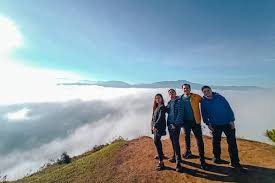
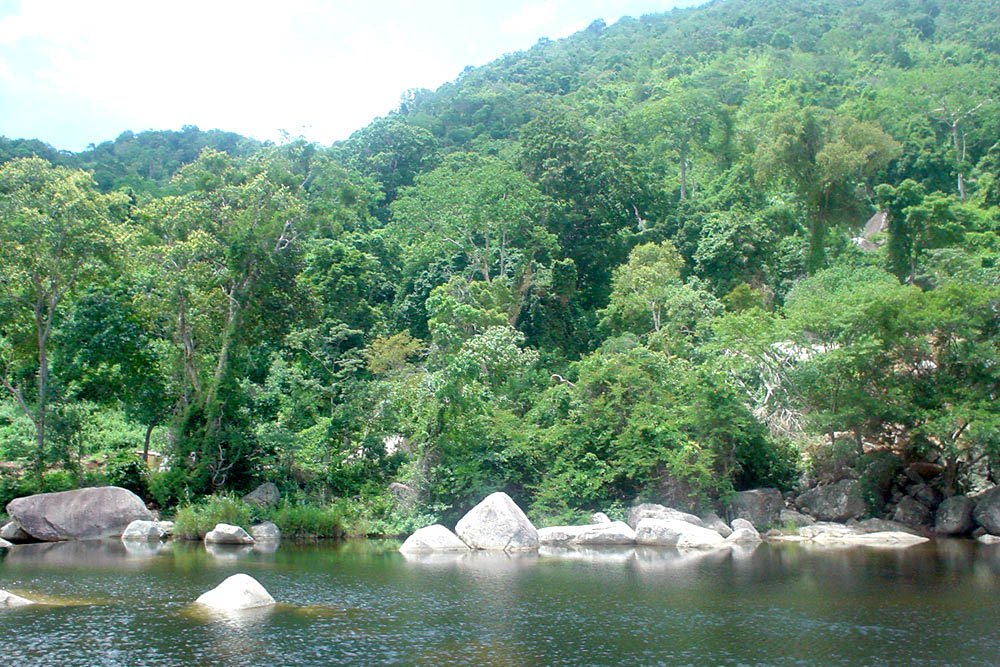
Chu Yang Sin National Park is located in Lak and Krong Bong districts, Dak Lak province, 60 km to the south-east of Buon Ma Thuot city. The national park encompasses a range of high mountains in the northern part of the Southern Annamite Mountains. The national park is centered on Mount Chu Yang Sin, which, at 2,442 m, is the highest point in the southern Annamites. The topography of the national park is characterized by steep slopes and narrow valleys.
May 28, 2025
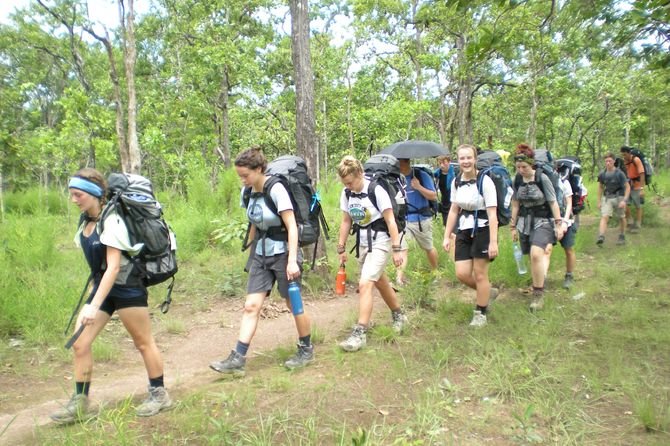
Chu Mom Ray National Park lies in the two districts of Sa Thay and Ngoc Hoi in Kon Tum Province, central highlands of Vietnam. It is the only national park in Vietnam which shares the border with the two countries of Laos and Cambodia.
May 28, 2025
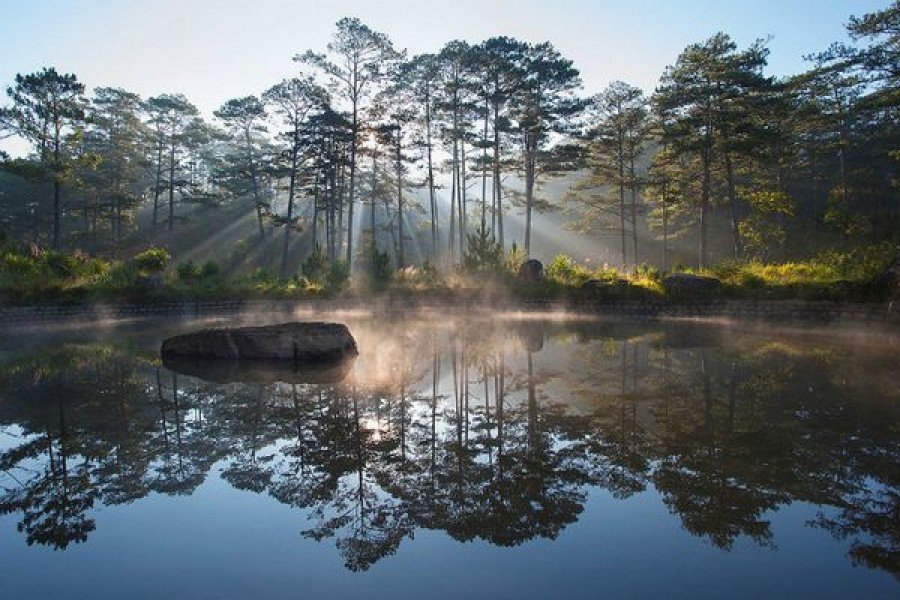
Bidoup Nui Ba National Park is situated in Lac Duong District, Lam Dong province in the central highlands of Vietnam. The park covers an area of 63,938 hectares, offering beautiful sceneries, stunning waterfalls, and diverse natural resources.
May 28, 2025
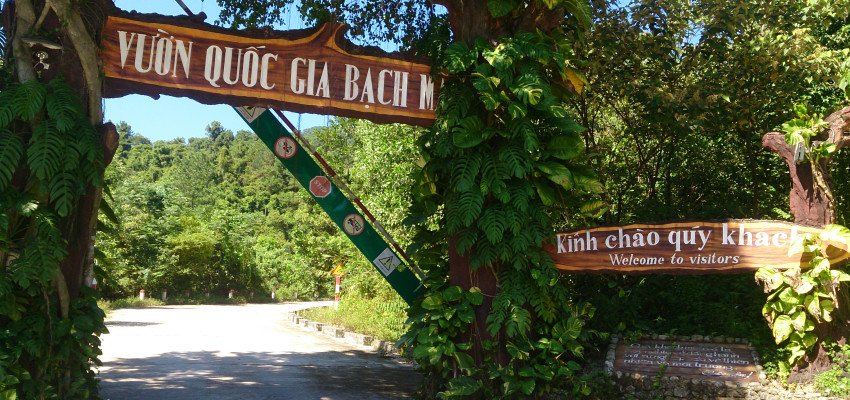
Bach Ma National Park is situated in the north central region of Vietnam, and the Annamite mountains. The national park lies on a high mountain ridge that runs west-east from the Laotian border to the East Sea at the Hai Van pass. This ridge interrupts the coastal plain of Vietnam, and, therefore, forms a biogeographical boundary between the faunas and floras of northern and southern Vietnam.
May 28, 2025
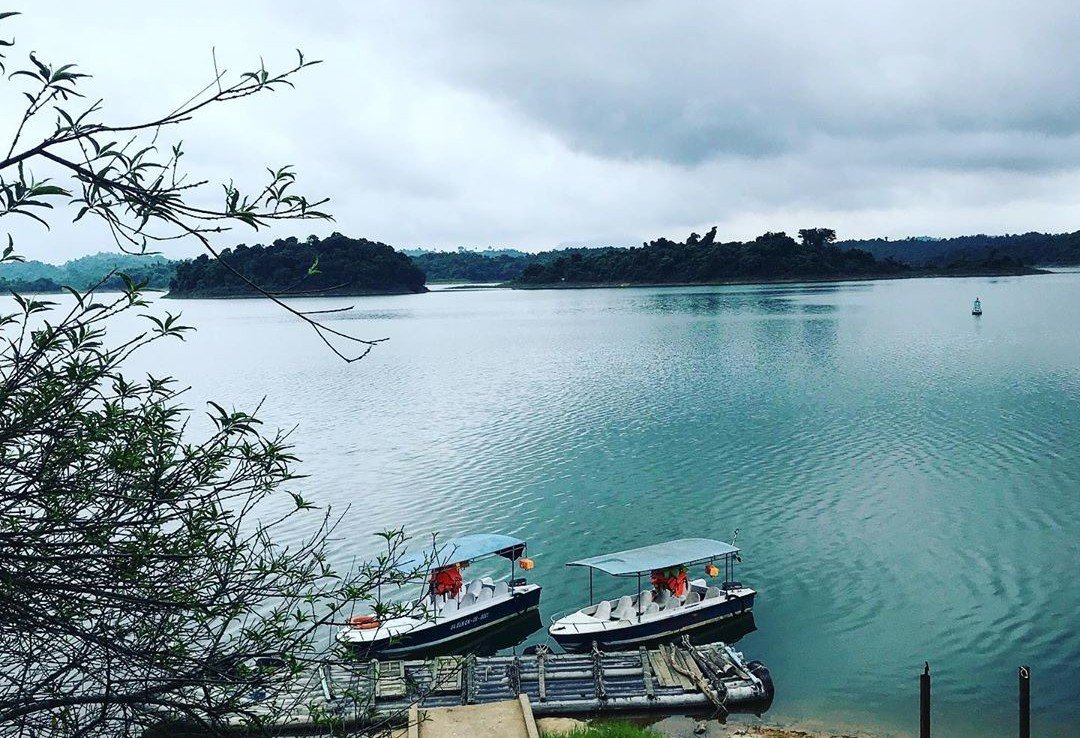
Ben En national park is situated in districts of Nhu Thanh and Nhu Xuan, Thanh Hoa Province about 200km from Hanoi. The park was established in 1992 and gradually expanded. It is not only a protected breeding ground for many rare creatures, but also an attractive destination for ecotourism.
May 28, 2025
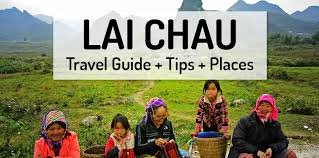
Lai Chau is a province in the northwest of Vietnam sharing borderline with Yun Nan province of China, Son La province, Dien Bien province to the west and south, and Lao Cai province to the east. The province is situated at the altitude of 1,500m above sea level, comprising high mountains, pure streams and rivers.
May 28, 2025
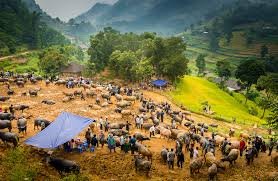
Bac Ha trekking is the best way to see Bac Ha as well as to discover its Sunday market, mountain scenery, and authentic local tribal villages.
May 28, 2025
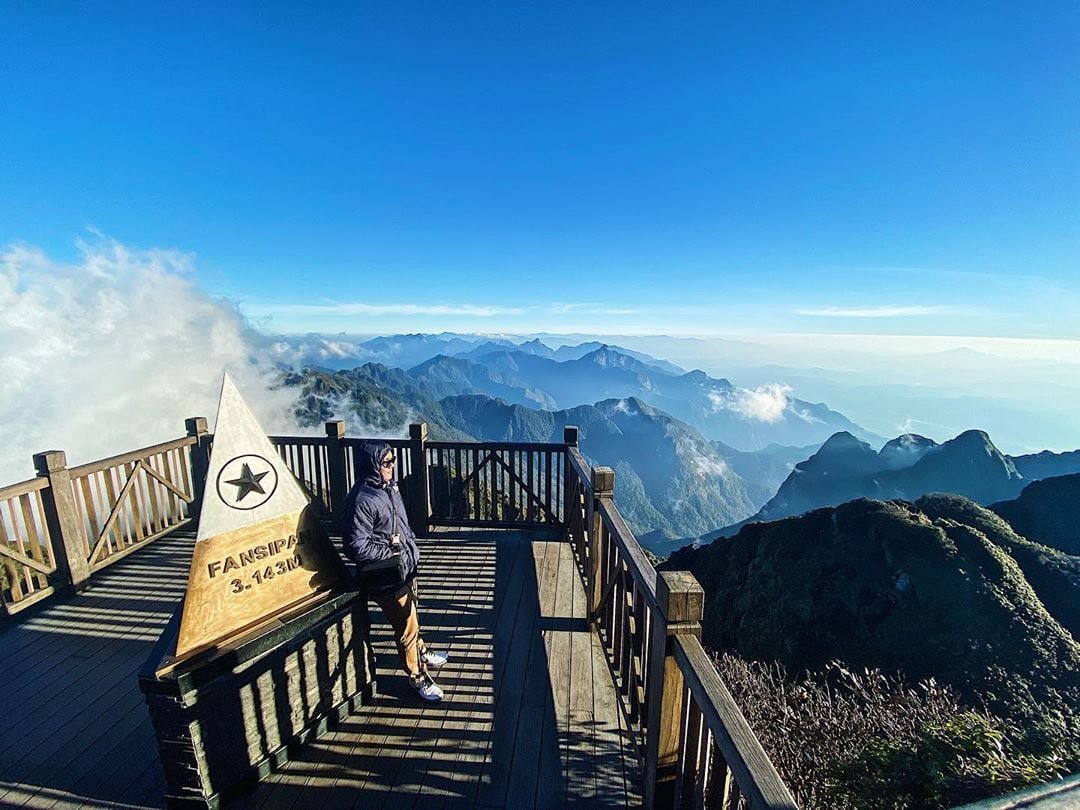
Fansipan Climbing is one of the most challenging activity in Vietnam. The Fansipan Mountain has long been the best hiking place in Vietnam. It is a favorite destination for intrepid travelers, and those who are fond of jungle trek, summit conquering, and mountain hiking.
May 28, 2025
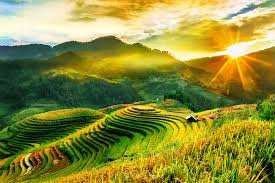
Sapa is a popular travel destination that offers the widest selection of trekking, hiking tours in Vietnam. It’s the place where a large number of tourists go to from Hanoi for some trekking through the beautiful scenery of North Vietnam’s mountains
May 28, 2025
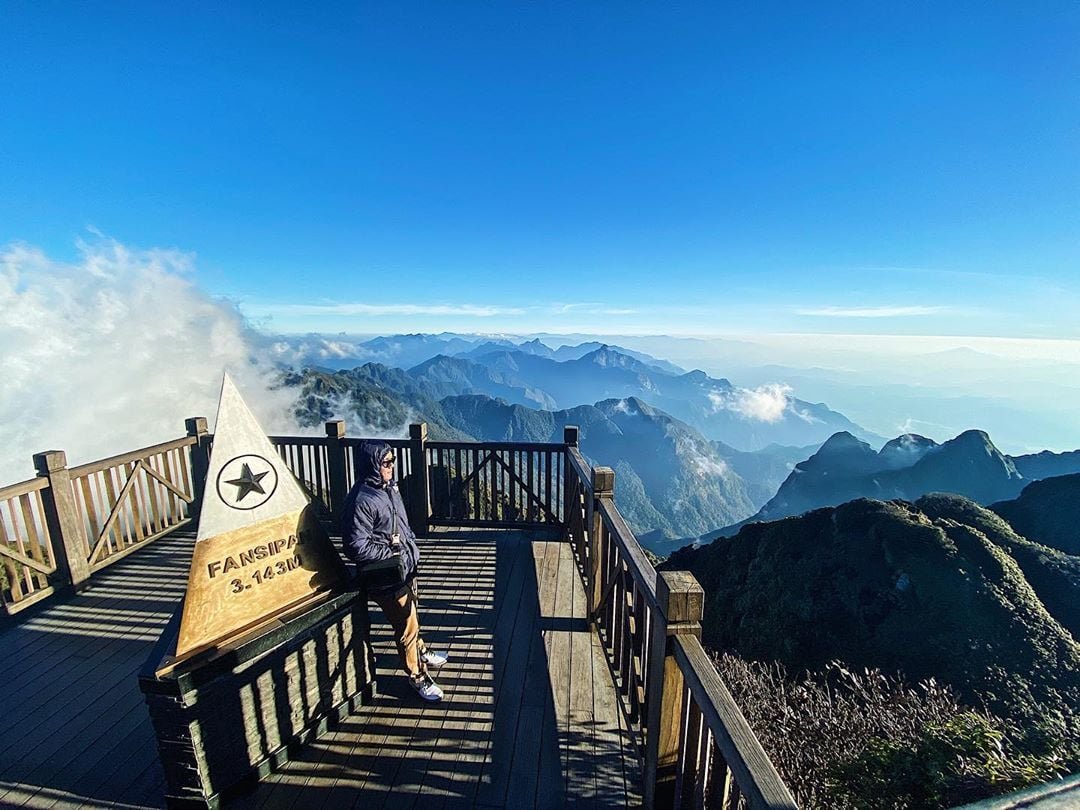
Hoang Lien National Park is situated at a height of 1,000m to 3,143m above sea level in the Hoang Lien Son Mountain Range in Sapa and Van Ban districts, Lao Cai Province, and a partly belongs to Than Uyen District, Lai Chau Province.
May 28, 2025
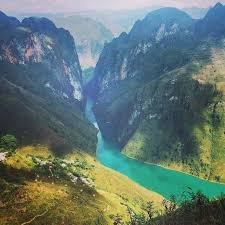
Ha Giang province is located in the northern mountainous area of Vietnam, sharing its borders with China in the north, Tuyen Quang province in the south, Cao Bang province in the east, and Yen Bai province, and and Lao Cai province in the west.
May 28, 2025
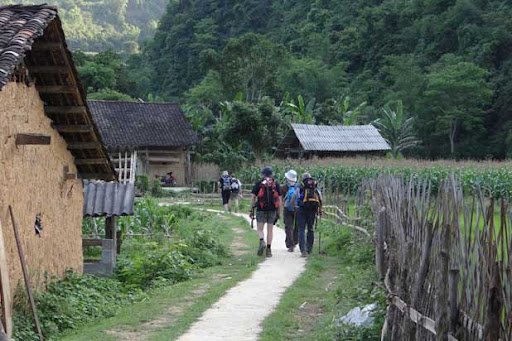
Cao Bang trekking is the best way to discover Cao Bang province as well as the northeast region of Vietnam. The place has been voted as one of top 5 trekking place in South East Asia. We at Golden Trail Travel Hiking Vietnam provide not only a wide selection of off the beaten path trekking trips in this region, but also much practical information about Cao Bang trekking, Cao Bang Vietnam trekking, Cao Bang trek, Cao Bang hiking.
May 28, 2025
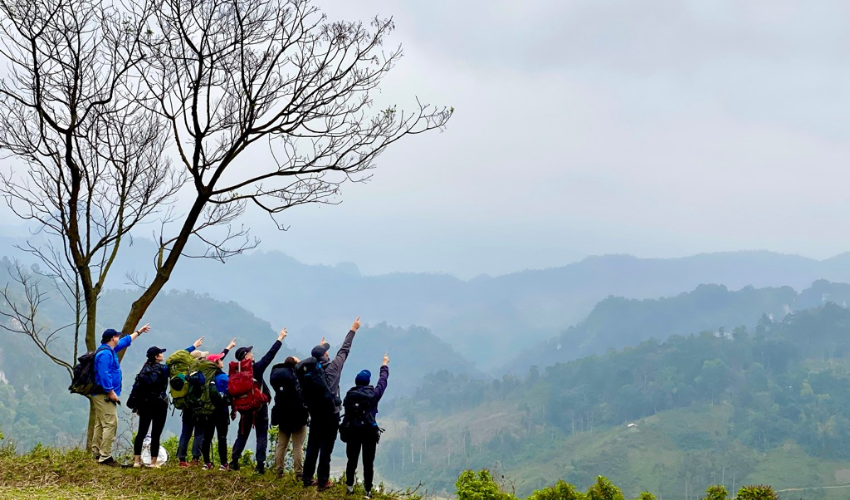
Ba Be National Park Trekking is the best way to explore the natural beauty and the unique system of flora and fauna of Ba Be. The activity also offers the chance to experience the rich ethnic culture of the Tay living within the park.
May 28, 2025
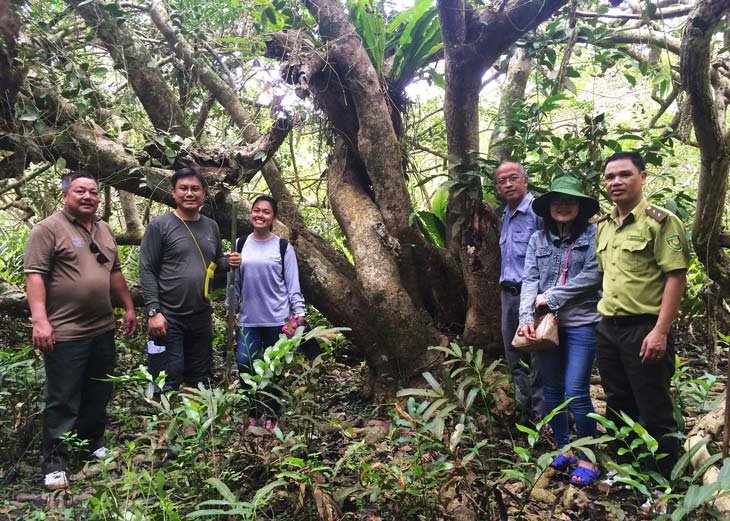
Bai Tu Long national park covers 15,783 hectares, of which forests and forest land make up 6,125 ha on more than 40 islands, and water surface accounts for 9,650 ha. It is home to 1,909 species of fauna and flora, including 72 types of animals and 30 kinds of plants listed in Vietnam’s Red Book of endangered species.
May 28, 2025

Cat Ba National Park is located in Cat Hai district, Hai Phong city in the northeast Vietnam. The national park is centered on Cat Ba island, a 28,500 ha island, which lies 20 km due east of Hai Phong city and immediately to the west of Halong bay. The national park also incorporates some of the small islands and marine waters situated to the east of Cat Ba island.
May 28, 2025
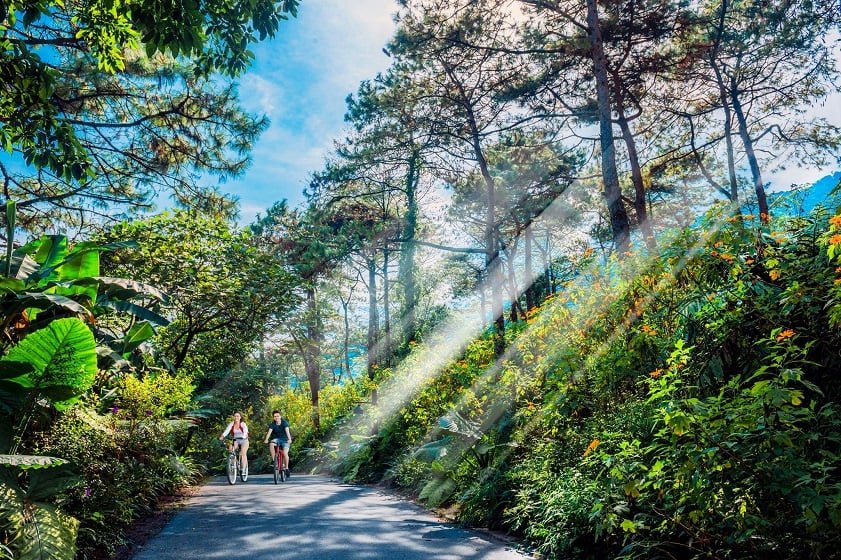
Coming to Ba Vi National Park, you will not only enjoy classic travel activities such as visit cactus gardens, Thuong Temple, French relics …you can also challenge yourself by joining a jungle trek through the park.
May 28, 2025
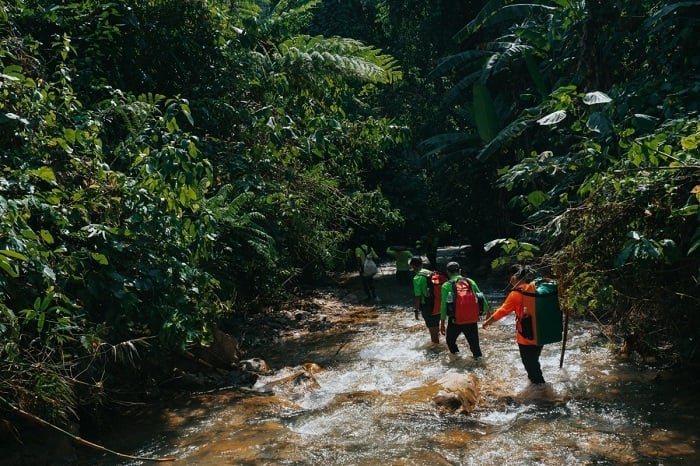
Xuan Son National Park is located 150 kilometers west of Hanoi at the entrance to the magnificent Hoang Lien Son mountain range, Phu Tho Province. The National Park is a great natural retreat and trekking area.
May 28, 2025
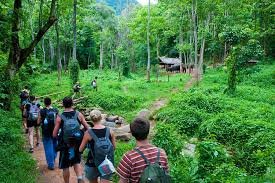
Cuc Phuong National Park is the centerpiece of Vietnam’s conservation efforts and one of the most accessible parks in Vietnam. The park is located about 120km from downtown Hanoi, and the car trip takes about 2-3 hours.
May 28, 2025
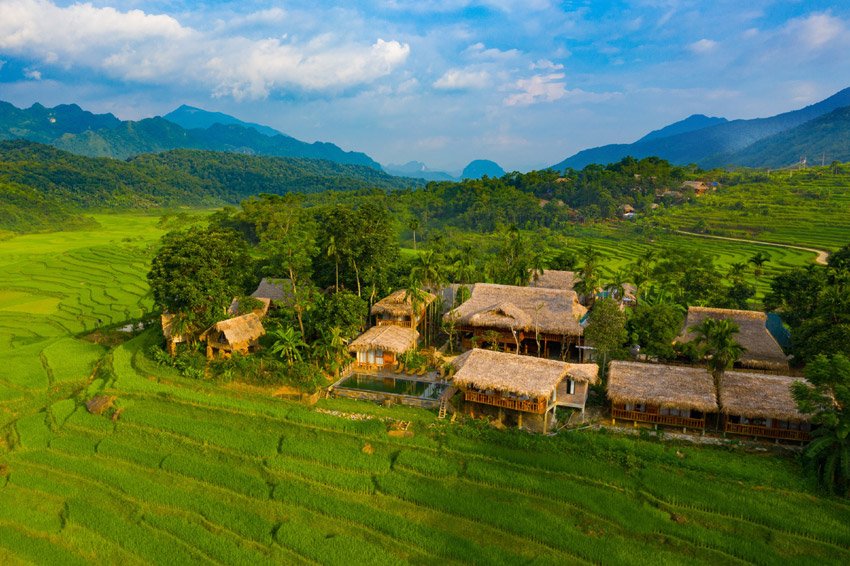
Pu Luong hiking tour is our most recommended trip since the itinerary offers you the chance to discover more the region including both the beautiful nature, rice terrace, and the authentic culture. You will have contact with different local Muong and Thai people on your Pu Luong Vietnam trek, and to experience their real, slow life.
May 28, 2025

Mai Chau Valley is located in Mai Chau District, Hoa Binh Province, approximately 135 km from Hanoi and 60 km from Hoa Binh City. Mai Chau Valley is surrounded by Thai villages scattered on the hill sides. Travelers come to Mai Chau to spend a night in a local stilt house and to experience the real life of the Thai people.
May 28, 2025